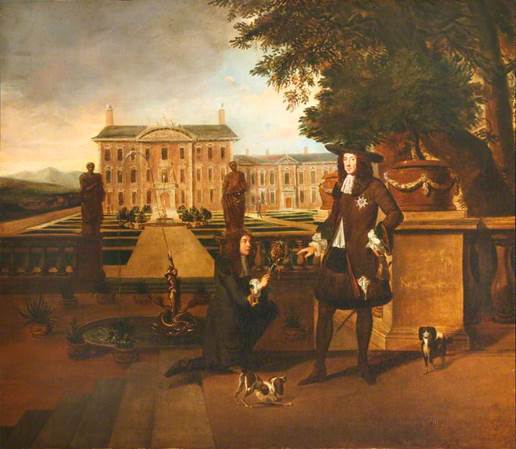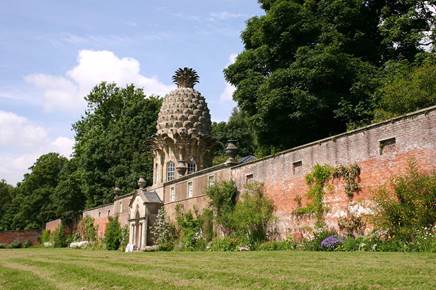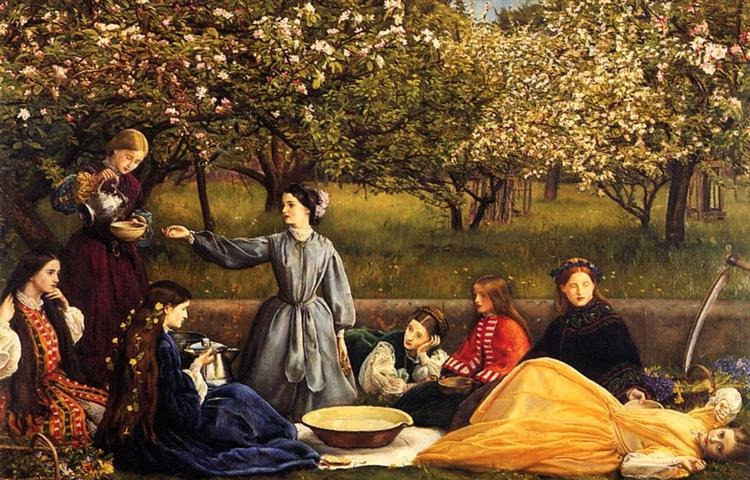Abundance and Scarcity… and Pineapples
What is the value of a pineapple?
Current US retail prices range from US$ 0.96 to US$ 1.93 per kilogramme—which also happens to be the approximate weight of the average pineapple—while UK retail prices range from US$ 1.91 to US$ 6.68, wholesale prices are of course lower while pre-sliced prices are higher. Though perhaps not necessarily the most frugal choice of fruit, pineapples are nonetheless an affordable commodity in most of today’s Westernised globalised economies.
Pricing, however, depends on supply and demand. Weather conditions that affect agriculture can result in price hikes of particular produce, as can any supply-chain issues that result in transport delays. Such variations in contemporary pineapple prices, however, are several orders of magnitude away from the several thousands of pounds one might have paid for a pineapple in 17th or 18th century Britain (adjusted for inflation).
Indigenous to South America, the pineapple was unknown to Europe prior to colonisation. Europeans first saw pineapples in 1493 when Christopher Columbus and his crew landed in Guadeloupe (Collins 147). The fruit was documented in various accounts and illustrations as one of the many curiosities of the “New World” in the centuries that followed (the circulation of these texts and images was aided by the advent of printing and acute interest in the New World that gained ground in the mid-16th century). The unexpected shape of the fruit was made more intriguing by the difficulty experienced in bringing back actual specimens. As with any fruit, pineapples were prone to rotting on the long transatlantic voyages and pineapples cut up and preserved with sugar were a far less impressive sight than their fresh, whole counterpart. Columbus returned from his second transatlantic voyage with several pineapples on board his ship, with the intention of gifting them to King Ferdinand and Queen Isabella. Upon unloading the ship, however, the sailors realised that only one specimen had not entirely rotted and it was immediately rushed to the Court where it experienced a glowing reception (Beauman 22).
Tales of the pineapple therefore circulated more widely than the fruit itself, being terribly scarce on the European continent in the 16th and 17th centuries. The raw fact of quantitative scarcity was enough to foster value and intrigue but these qualities were then further strengthened by the association of the pineapple to wealth. While the potato had also been brought back from the New World, it did not benefit from the same glamorous reputation as the pineapple. The pineapple’s scarcity combined with King Ferdinand’s enjoyment of it meant that “it was from the beginning cast in the world stage as worthy of royalty” (Beauman 23). Entangled in the vision of the New World as a sort of New Eden, the pineapple’s noble status in the collective imagination aided it in becoming a symbol of paradise. In fact, in the 17th century, James I of England suggested the pineapple as a possible candidate for the biblical forbidden fruit (Cumo 298)1. He is said to have received one as a gift in 1625 but no account survives (O’Connor 20).
The pineapple was introduced to various other parts of the world, most notably by the Portuguese, and was soon being cultivated along the coast of West Africa as well as in China and in India. Such cultivation was not possible in Europe until the development of hothouses. Unlike a greenhouse, these hothouses used technological advancements of the time to introduce heat into the plants’ environment (with features such as under-floor ovens or heated plant stands) allowing gardeners to imitate the conditions of the plants’ native tropical climates (pineapples indeed need a constant temperature of over 20°C to grow).
These techniques were pioneered by the Dutch in the late 17th century but France and Britain followed and were “the two European countries that pursued the cultivation of pineapples with a spirit that amounted to obsession” (O’Conner 25). Despite this enthusiasm, the environment needed to grow a pineapple was prohibitively costly, as was the purchase of the plant itself: “In Britain, the cost of a young pineapple plant purchased to be brought to fruit in a hothouse with no guarantee of success was between four and five shillings, at a time when a common labourer was fortunate if he earned £15 a year” (O’Connor).
The pineapple thus long remained a rarity reserved for the wealthy. As popular as it was, the complications in either its cultivation or importation made it a scarce commodity. A portrait of Charles II from the late 17th century shows him receiving a pineapple from the royal gardener.

The pineapple is speculated to be either an allegory or an imported gift (O’Connor 21) rather than an actual early, or even first, pineapple grown in England, given the state of pinery technology at the time. However, engineering progress was quickly made and “by the mid-1720s every self-respecting aristocrat in England aspired to owning a pinery” (Beauman 76). The difficulty in obtaining the rare fruit had led to a technological race between nations that would in turn “lay the beginnings of a frenzied fashion that was to engulf the country for the next 150 years” (Beauman 76) in which the pineapple was “the Prada handbag of its day” (Beauman xii).
Difficult to acquire, the pineapple became a popular society piece used to signal one’s wealth to others. Combined with its exotic appearance, it became the symbol of not only wealth, but extravagance. Building and running a pinery involved astronomical costs (Beauman 82) and the pineapples grown on English estates, deemed too precious to be eaten, were initially more likely to be used as dinner table ornaments used to impress guests. Just as hostesses with societal aspirations could rent china and silverware, they could now also rent a pineapple (O’Connor 37).
Moreover, pineapples also made their way into architectural trends, interior design trends and even hairstyle trends (O’Connor 36). Perhaps the most famous architectural example is the Dunmore Pineapple in Scotland, close to Sterling.

The building contained a hothouse and was built in 1761 by John Murray, 4th Earl of Dunmore. His abundance of wealth was not to be merely signalled by the sheer cost of having a pinery but also by the significant costs of such an extravagant construction whose purpose was merely decorative. The pineapple remained popular in Victorian England and continued to be entangled in issues of status anxiety and affirmations of wealth.
Yet, after such a long period of admiration and fascination, how did the pineapple fall to being such an ordinary commodity? High demand further motivated the technological developments in hothouses, meaning a greater number of pineapples were available year-round. The abolishment of the Glass Tax in 1845 also drove done pinery costs and, overall, the progress of pineapple cultivation is illustrative of England’s powerful industrial growth in the 19th century. Ultimately, however, the abundance of pineapples in England came from technological developments not in hothouses but in steamships and refrigeration. In the summer of 1820, the first large-scale cargo of pineapples landed in Britain and, “by 1850, 200,000 pineapples were being unloaded on to London’s docksides every year” (Beauman 172). But even in the early 1820s, the change was already dramatic: in 1822, John Claudius Loudon observed “Of late years the Pine Apple has been sent to England in abundance… This facility of cultivation, and their more general culture, has greatly lessened their price, and rendered them common” (Loudon 5). Never again would the pineapple be exclusive to the British upper classes. How could the fruit possibly serve as an extravagant table decoration when a child in the street could enjoy the taste for a penny a slice?
Rather than being a literal commodity of inaccessible abundance, the pineapple today merely retains this value in a symbolic sense. More recently in Western cultures, the presence of the pineapple in mass-consumption designs for home décor or fast fashion has served as a symbol for the “vaguely tropical”—an elsewhere whose attraction comes from its contrast with a dissatisfactory quotidian (and this elsewhere’s symbolic investment is possible perhaps more due to its total absence than to its scarcity)2. This imaginative construction of an absolute vacation, conceived beyond the practicalities of temporal and spatial bounds, uses images of tropical abundance not unlike those from the initial accounts of the New World and its exotic fruits, the star of which has always been the pineapple. In a similar vein, during his travels, Charles Darwin observed the following about Tahiti: “Pine-apples are here so abundant that the people eat them in the same wasteful manner as we might turnips” (Darwin 407). Such accounts echo the earlier Edenic projections of the Old World onto the New World. Having the scarcest and most attractive commodities suddenly become abundant certainly connotes paradise.
Scarcity and abundance, while opposites are similar in their deviation from the mean, both finding definition in the extremity of a quality or of a quantity. The concepts therefore exist both in opposition to each other and in their oppositions to states balance or neutrality. Seeking out or fleeing from one of these two extremities engages the way we relate to resources, or to desire and need, and invites us to think on issues of value, norms, and excesses.
As the human relationship to resources has taken on greater scales, issues of abundance and scarcity have also become the issues of economic supply and demand, falling into the realm of markets and consumerism. The current “era of abundance” sees even lower income households able to access both large quantities and varieties of consumer goods. Beyond Veblen’s conspicuous consumption, the current era finds itself facing the question of constant consumption. Initiatives such as the “Buy Nothing Day,” a day of protest against consumerism, would have had little to no resonance for the great majority of human history. Food is a particularly useful example for addressing the ambivalence of abundance: though a feast may traditionally play a positive role in reinforcing social ties, or a host’s prestige, today’s overabundance of processed foods has shown perverse side-effects in regards to certain populations’ health, including the more disadvantaged. Furthermore, occurrences such as the presence of the easily-accessible pineapple in the supermarket also beg the question of the hidden costs of abundance. Contemporary consumers are becoming increasingly aware of the environmental implications of the abundant quantities of exotic produce, whether those are due to the energy dispensed in their transport or in intensive agricultural practices.
Abundance in this sense surpasses its status as the sign of economic prosperity and security in resources. Abundance as profusion quickly falls into the trap of wasteful extravagance; less value is attributed to that which is easily accessible. The food waste problems of certain societies are unimaginable in other times or places. Yet it is perhaps precisely because of this disparity that wastefulness has become a method of signalling one’s status. The dynamics of abundance and scarcity evoke the human connection to the natural world. To dominate these dynamics is to cast oneself in a superior metaphysical role. Humans, like various animals, have long had the practice of storing food during the winter (or other types of less agriculturally productive months throughout the world). This practice ensures the long term survival of the individual and the community but it is when concerns of basic survival are surpassed that the relationship to abundance and scarcity becomes revelatory of deeper human and philosophical issues.
The articles in this issue invite us to consider these questions across a variety of approaches and lead to considerations and re-considerations of abundance and scarcity across a wide range of definitional applications. Rose Borel explores Hemingway’s ambivalent representations of abundance and scarcity in True at First Light, and offers an exploration of the notions of abundance and scarcity through the lens of Baudrillard’s theories, relating the problem to issues of consumerism and the society of spectacle. Borel’s study of Hemingway’s fictional memoir brings forth questions of one’s relationship to the land and the issue of authenticity, an element that is echoed in Virginia Allen-Terry Sherman’s study of culinary memoirs, where the abundance of American society in the 20th century, like in the previous article, is also considered in terms of problems of inauthenticity. Allen-Terry Sherman also considers ambiguous representations of abundance and scarcity through an examination of the insights from diasporic experiences of the American Dream. The particular focus on taste positions food as a vector for both individual experience and for cultural and familial connections.
Familial ties are then brought to the forefront by Hugo Jordan’s work on abundance and abandon in Wes Anderson’s films. Considering both the aesthetic and thematic roles of abundance, Jordan studies abundance as a compensation for scarcity, leading characters into hyperactivity, the accumulation of objects and the reconstruction of the lost family unit. The loss of family as a driving force in attempts at self-defintion is also evident in Mathilde Buliard’s study of Daniel Mendelsohn’s memoir The Lost: A Search for Six of Six Million (2006), in which the author documents his search for information on his family members killed during Nazi occupation. Buliard emphasises Mendelsohn’s extensive journeys and research and how they disappointingly lead to scarce results and answers. However, she also shows the ways in which Mendelsohn conceives his book as a way of providing his ancestors with a story, something previously absent and a gap in his heritage.
From the difficult emotions that arise within the exploration of the past, the issue moves into Lisa Haristoy’s consideration of emotions in feminist speculative fiction. Haristoy turns her gaze to the depletion of genuine emotions in the dystopian settings of three 21st century novels, yet shows how the repression of emotions can never lead to their erasure: their liquid quality floods established categories and boundaries and her paper argues emotions as a tool of feminist resistance. Finally, Sophie Elzière, via a study of Ted Hughes’s Crow, also considers the essential human reactions to depletion. In her article, scarcity manifests as the deserted battlefield of the poem, a wasteland that results from abundance as greed and barbarous excess. The poet-scavenger attempts to make sense of this depleted world and Elzière shows how it is in the economy of form and the rawness of the poetic voice that there can be a new breath of life.
Abundance and Scarcity are thus presented, across these contributions, as ambiguous notions and as a dynamic that is in perpetual movement and reinvention—one where embracing the flux of the dynamic is often a way of moving forwards.
Notes
- 1The Bible does not originally name any particular fruit as being the forbidden fruit. The apple comes from St Jerome’s translation at the turn of the 5th century.
- 2After enjoying a peak in the 2010s the latest iteration of the pineapple trend is now dated and its place as a visual print for objects seems to have been replaced by the mushroom, perhaps pointing to a replacement of escapist dreams of distant tropical destinations with escapist dreams of a smaller and quieter life.
Works Cited
- Beauman, Francesca. The Pineapple: King of Fruits. Random House, 2011.
- Collins, J. L. “Antiquity of the Pineapple in America.” Southwestern Journal of Anthropology, vol. 7, no. 2, 1951, pp. 145–55. JSTOR, http://www.jstor.org/stable/3628620. Accessed 9 April 2024.
- Cumo, Christopher. Foods That Changed History: How Foods Shaped Civilization from the Ancient World to the Present. ABC-CLIO, 2015.
- Darwin, Charles. Journal of Researches into the Geology and Natural History of the Various Countries Visited by H.M.S. Beagle, under the Command of Captain Fitzroy, R.N. from 1832 to 1836. J. Murray, 1845.
- Loudon, John Claudius. An Encyclopedia of Gardening. Longman, Hurst, Rees, Orme, and Brown, 1822.
- National Trust for Scotland. The Walled Garden on a Sunny Day. https://Www.Nts.Org.Uk/Visit/Places/the-Pineapple. Accessed 9 April 2024.
- O’Connor, Kaori. Pineapple: A Global History. Reaktion Books, 2013.
- Stewart, Thomas. John Rose (1619–1677), the Royal Gardener, Presenting a Pineapple to King Charles II (1630–1685) (after Henry Dankerts). 1783. National Trust, Ham House, https://artuk.org/discover/artworks/called-john-rose-16191677-the-royal-gardener-presenting-a-pineapple-to-charles-ii-16301685-217099 . Accessed 9 April 2024.
- “UK Pineapple Prices.” Food & Agriculture B2B Marketplace, Selina Wamucii, https://www.selinawamucii.com/insights/prices/united-kingdom/pineapples/. Accessed 9 April 2024.
- “US Pineapple Prices.” Food & Agriculture B2B Marketplace, Selina Wamucii, www.selinawamucii.com/insights/prices/united-states-of-america/pineapples/. Accessed 9 April 2024.
- Veblen, Thorstein. The Theory of Leisure Class. Dover, 1994.
